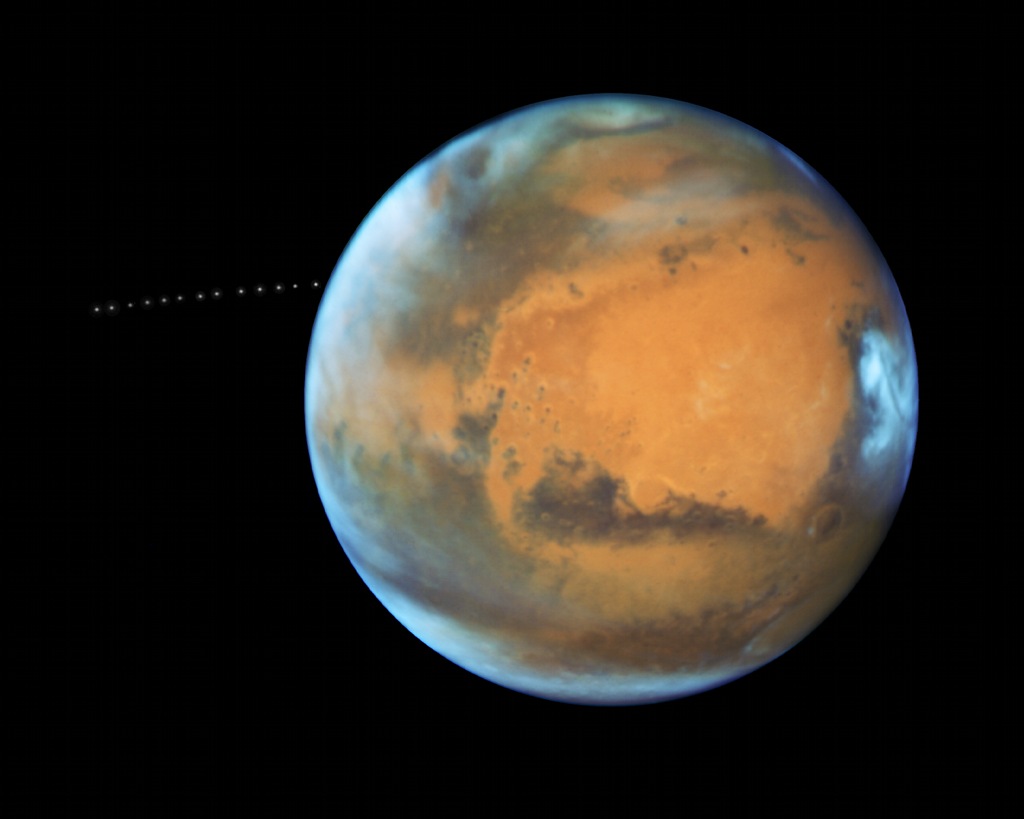2024年3月22日
Phobos: Moon over Mars
Image Credit: NASA, ESA, Zolt Levay (STScI) – Acknowledgment: J.Bell (ASU) and M.Wolff (SSI)
Explanation: A tiny moon with a scary name, Phobos emerges from behind the Red Planet in this timelapse sequence from the Earth-orbiting Hubble Space Telescope. Over 22 minutes the 13 separate exposures were captured near the 2016 closest approach of Mars to planet Earth. Martians have to look to the west to watch Phobos rise, though. The small moon is closer to its parent planet than any other moon in the Solar System, about 3,700 miles (6,000 kilometers) above the Martian surface. It completes one orbit in just 7 hours and 39 minutes. That’s faster than a Mars rotation, which corresponds to about 24 hours and 40 minutes. So on Mars, Phobos can be seen to rise above the western horizon 3 times a day. Still, Phobos is doomed.
Tomorrow’s picture: Ares 3 Landing Site
火卫一: 火星上空的卫星
影像提供: NASA, ESA, Zolt Levay (STScI) – 志谢: J.Bell (ASU) and M.Wolff (SSI)
说明: 这颗小卫星以”恐怖 (Phobos)”为名。在这幅来自地球轨道上的哈勃太空望远镜的时序影像序列里,火卫一从火星的后方升起。这个由22分期间的13张照片所组成之序列,则摄于2016年火星最接近地球的火星冲之时。如果火星人想要看火卫一升起的话,他们得往西边看。这颗小卫星和火星表面的距离约为6,000公里,是太阳系里最靠近母行星的卫星。火卫一的轨道周期只有7小时39分,比火星的自转周期(24小时40分)要短。因此,在火星上能看到火卫一每天从西方地平面升起3次;更也因此,未来火卫一难逃坠毁的宿命。
明日的图片: Ares 3 Landing Site




Pingback: 狮子三重星系 – NASA中文